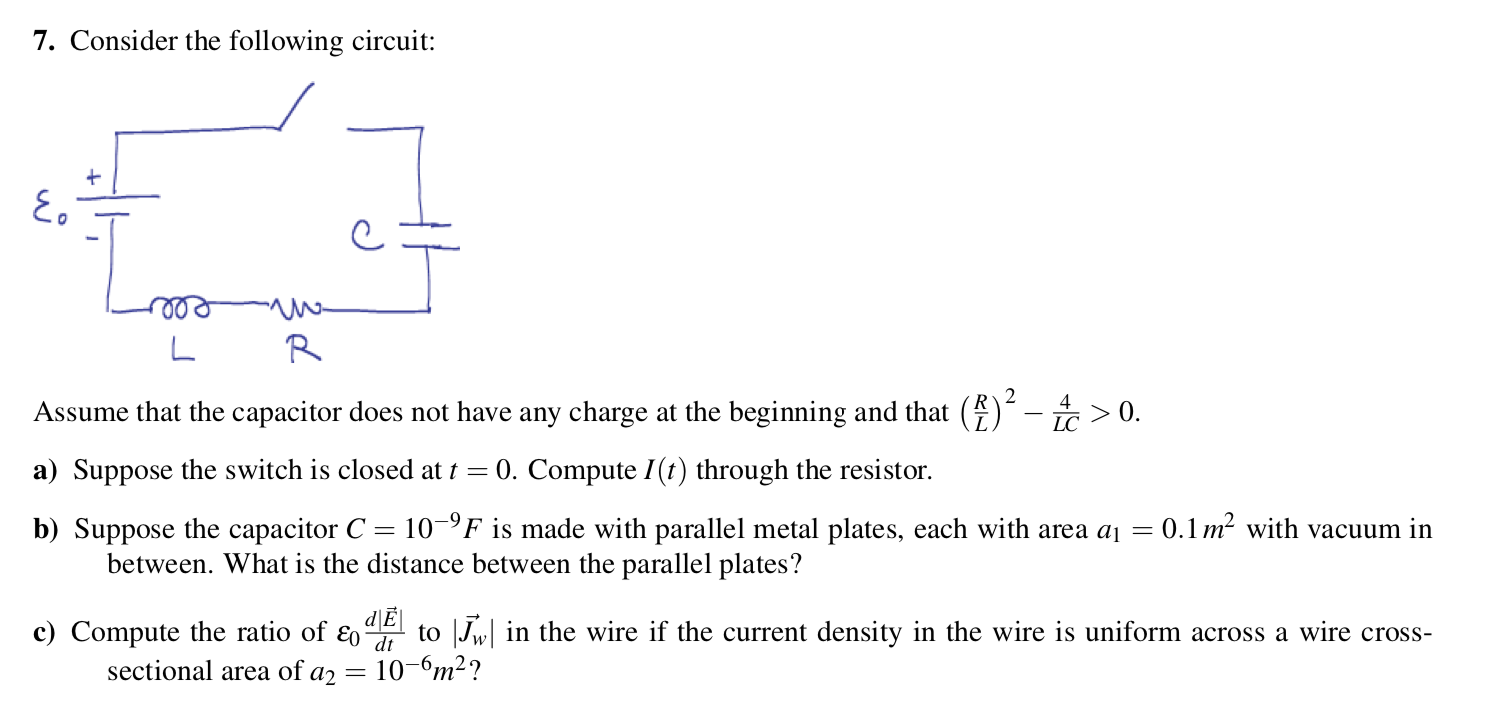7. Consider the following circuit: 2 Assume that the capacitor does not have any charge at the beginning and that ()´- > 0. LC a) Suppose the switch is closed at t = 0. Compute I(t) through the resistor. 0.1 m? with vacuum in b) Suppose the capacitor C = 10–°F is made with parallel metal plates, each with area a1 = between. What is the distance between the parallel plates? d\E c) Compute the ratio of ɛo to Jw in the wire if the current density in the wire is uniform across a wire cross- dt sectional area of a2 10-6m2?
7. Consider the following circuit: 2 Assume that the capacitor does not have any charge at the beginning and that ()´- > 0. LC a) Suppose the switch is closed at t = 0. Compute I(t) through the resistor. 0.1 m? with vacuum in b) Suppose the capacitor C = 10–°F is made with parallel metal plates, each with area a1 = between. What is the distance between the parallel plates? d\E c) Compute the ratio of ɛo to Jw in the wire if the current density in the wire is uniform across a wire cross- dt sectional area of a2 10-6m2?
Related questions
Question

Transcribed Image Text:7. Consider the following circuit:
2
Assume that the capacitor does not have any charge at the beginning and that ()´- > 0.
LC
a) Suppose the switch is closed at t = 0. Compute I(t) through the resistor.
0.1 m? with vacuum in
b) Suppose the capacitor C = 10–°F is made with parallel metal plates, each with area a1 =
between. What is the distance between the parallel plates?
d\E
c) Compute the ratio of ɛo
to Jw in the wire if the current density in the wire is uniform across a wire cross-
dt
sectional area of a2
10-6m2?
Expert Solution
This question has been solved!
Explore an expertly crafted, step-by-step solution for a thorough understanding of key concepts.
This is a popular solution!
Trending now
This is a popular solution!
Step by step
Solved in 6 steps with 5 images
